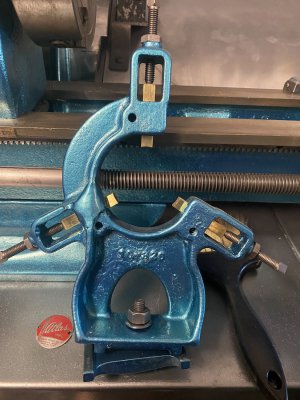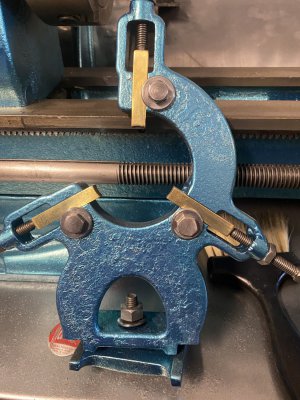I TIG cast iron with a nickle rod.
You use a nickle rod so it doesn't draw carbon from the cast iron into the weld area which makes it brittle. I also pre-heat prior (couple hundred degrees or so) and bury it in play sand afterwards.
You want cast warm when welding and a slow cool down to help prevent hardening (IE:carbon in the weld and surrounding area) in the weld area which can cause it to crack. Rapid cooling after welding can also lead to build up of stress at the weld area and if it doesn't crack while cooling, it can crack when put under the added stress of use (IE: weight, vibration, bending, etc). Welding cast is all about managing the internal material stresses and embrittlement (ie: hardening).
At least, that's how I do it. I'm not a fan of TIG brazing when I can make a proper weld. But braze can certainly work for a lower stressed part...
I TIG brazed cast iron few times and I did weld it twice with a nickel rod. My preference is firmly for TIG brazing. Why? Because preheating cast iron and then slowing down its cooling properly is quite a job compared with just pulling out a TIG torch and TIG brazing immediately. You can just stop half way, go do something and come back to it when you have more time etc. The most difficult part is usually to align the broken pieces. Once you tack braze them. You're home (AC caveat below).
All of my cast iron repairs held up, but I have to say if you don't have Oxy-Acetylene (or any other Oxy-fuel torch) with a rosebud tip I would Tig-braze it, because preheating that piece will be challenging with just propane. Perhaps if you had a big torch? But then you're getting a huge flame so you would need lots of space around it for safety etc.
Also if its going to get painted anyway... That's another factor in favor of TIG braze. In fact I can't think of a reason when welding could be preferred(other than by personal preference, and maybe if your TIG machine is not AC capable, more about it below) ... It is true, when properly preheated a weld can be stronger, but the problem with cast iron welding is not just that carbon migrates into weld metal making it brittle(which is solved by using nickel), but cast iron itself gets hard and brittle when cooled too quickly. In general I would trust a braze far more than a weld in a structural cast iron component. At least I would know the cast iron surrounding the joint wasn't compromised.
So about TIG brazing, I only use silicone bronze filler, because that's what is available here, but people swear by aluminium bronze flowing better and being stronger. Also, is your TIG welder AC capable (with percentage of cleaning waveform setting)? If no, that will limit you just to silicone bronze and it's going to be a far less pleasant experience.
Unfortunately, cast iron, doesn't matter how well you clean it will give off various junk that will make your braze/welding puddle not flow, or not wet, or both at the same time.. It depends how "dirty" cast iron you have is. Some are OK-ish,some are horrible. If yours was horrible and you do have a way to preheat and slow the cool down I would consider welding with a nickel rod as filler. It's easier to blast through dirty material when welding than with tig brazing.
However, if your machine is AC capable. Set it to AC (make sure to use AC electrode - don't "ball it" just grind it normally). Set only 10% cleaning waveform and let the AC clean the cast iron for you. It helps if you know how to AC TIG, as the arc behaves a little different than a DC arc. It has more of a tendency to wander if you don't keep it tight. AC makes a night/day difference when TIG brazing cast iron.
Edit: One more thing. I know we're talking about a cabinet doors here, but people in future might read this looking for advice how to repair some safety critical cast iron component. I have to stress
I wouldn't trust my life or health to any cast iron weld or braze repair. Cast iron is a brittle, inhomogeneous metal, after it was welded/brazed who knows what kind of stresses and micro-cracks are present in it. I doubt anyone, anywhere makes any safety critical equipment using cast iron(like hoisting stuff, or crane components) , but I thought to add this just in case. Same applies to wrought iron.




